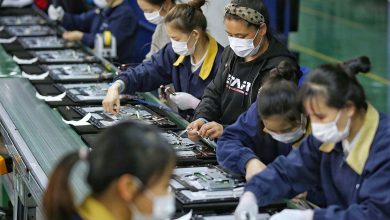Betting big on Philippine hospitality

THE Philippine hospitality sector continues to recover after incurring substantial losses in 2020 and 2021. The Philippine government’s international arrivals target in 2023 was breached, resulting in overall improvement in Metro Manila occupancies and daily rates. Meanwhile, 2024 will be a banner year for new hotel completion in Metro Manila, with local and foreign brands to open new facilities across the Philippines. The tourism sector’s share to national economic output has also been improving.
MAXIMIZE THE RETURN OF BUSINESS TRAVELERS AND IN-PERSON EVENTSFour- and five-star hotels are likely to benefit from the return of in-person corporate events and the resurgence of business travels. Property exhibits, pharmaceutical product launches, overseas employment summits are among the events that help drive occupancies of hotels and are primarily hosted in hotels’ meeting rooms and exhibition centers. Hotel operators should maximize the return of these in-person events and tap corporates by offering attractive packages. Hotel operators should also work closely with the Tourism department that is actively enticing international organizations to mount their events in the country. The department is also priming the Philippines as a key meetings, incentives, conferences, and exhibitions (MICE) destination in Asia, and this should result in the holding of international MICE events in the Philippines, especially in Metro Manila, Clark in Pampanga, Cebu, and Davao.
TAKE ADVANTAGE OF THE GOVERNMENT’S ‘BUILD, BETTER MORE’ INITIATIVEThe development and modernization of more airports across the country should provide opportunities for property firms that intend to expand their leisure foothold. This expansion strategy should also be buoyed by the improvement of road networks leading to popular and emerging tourist spots across the Philippines. In our view, developers with parcels of land near major airports and mass transit systems should consider developing new hotels and explore complementing these with MICE facilities to cash in on a rebounding hotel sector across the Philippines, as shown by rising daily rates, occupancies, and tourism revenues. In our view, the hospitality sector will continue to benefit from improving infrastructure connectivity.
ATTRACT MORE NON-TRADITIONAL SOURCE MARKETSColliers believes that hotel operators should take a cue from the Tourism department’s initiative of enticing more foreign tourists from non-traditional markets. In 2023, the Philippines’ major source markets were the United States, South Korea, Japan, and Australia. A formidable part of these ‘visitors’ were also overseas Filipino workers vacationing in the Philippines. The Tourism department is trying to diversify its source of international arrivals and airlines and hotel operators should work with the government in targeting non-traditional source markets such as India, the Middle East and European countries. Hotel players should specifically target long-haul and high-spending tourists likely to propel hotel stays and leisure-related expenditures in hotels and other leisure-related establishments.
2023 ARRIVALS EXCEED DOT TARGETData from the Department of Tourism (DoT) showed that foreign arrivals in the country reached 5.45 million in 2023, breaching the full-year target of 4.8 million and the 2.65 million recorded in 2022. The total arrivals in 2023 represent a 66% recovery rate for the Philippines’ all-time high of 8.26 million arrivals in 2019. South Korea remains as the country’s top source market with 1.4 million arrivals followed by the United States (903,299), Japan (305,580), Australia (266,551) and China (263,836).
The DoT has also launched programs to attract more international visitors and prop up domestic tourism including the mounting of local and international travel fairs, signing of cooperation agreements with major tourist-generating markets including Japan. In 2024, the Tourism department’s goal is to attract 7.7 million international tourists.
Meanwhile, international tourist receipts reached P482.54 billion ($8.7 billion) in 2023, more than double the P214.58 billion ($3.9 billion) a year ago and higher than the P482.15 billion ($8.7 billion) recorded pre-Covid or in 2019. The Tourism department remains optimistic as it aims to attract about 12 million foreign tourists in 2028.
HEALTHY OCCUPANCIESAverage hotel occupancies in Metro Manila reached 65% in the second half (H2) of 2023, up from 61% in H1 2023. The rise in occupancies was due to holiday-induced spending and the surge in foreign arrivals in the fourth quarter of 2023. The sustained demand for MICE also partly lifted the demand for hotels during the period. In 2024, we project average occupancy to reach 68% as we expect more international tourists despite the substantial completion of new hotel rooms in the capital region.
ADRS TO SUSTAIN RISE IN 2024In 2023, average daily rates (ADRs) grew by 10.4%, higher than our forecast of a 6% growth. Four-star hotels posted the fastest ADR increase in H2 2023, indicating strong demand for business+leisure (bleisure) hotels. Meanwhile, five-star hotels saw continued growth year on year due to sustained demand for leisure and in-person corporate events. In 2024, Colliers projects ADRs to increase by 6%. We expect the substantial completion of rooms to slightly temper the growth in daily rates in 2024.
Optimism in the hospitality sector abounds. This is one of the primary reasons why foreign hotel brands are aggressively looking at opening accommodation facilities in the Philippines. With more than 7,640 islands there’s definitely more to explore as the Philippines is ready for discovery. Love the Philippines!
For feedback, e-mail joey.bondoc@colliers.com or martin.aguila@colliers.com




